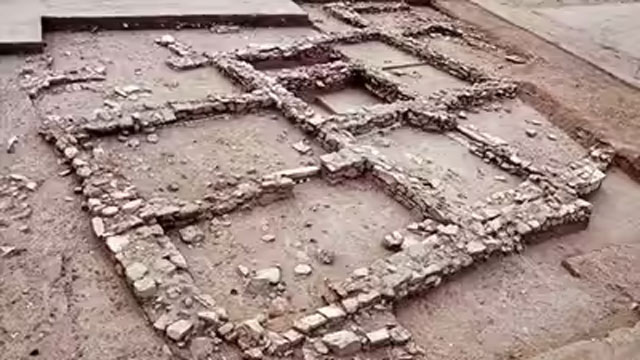Daijiworld Media Network - Kutch
Kutch, Oct 22: In a groundbreaking archaeological discovery, researchers have unearthed what is believed to be the oldest known caravanserai — a fortified roadside facility used by ancient traders — dating back 4,000 years to the Harappan civilisation. The site, located at Kotada Bhadli in Kutch district, offers the earliest evidence of a well-organised trade infrastructure in the Indian subcontinent.
The findings, published in L’Anthropologie (Elsevier, 2025), are the result of a joint study by Deccan College Post-Graduate and Research Institute (Pune), Symbiosis School for Liberal Arts, and the Archaeological Survey of India (ASI), New Delhi).

Lead researcher Dr. Prabodh Shirvalkar from Deccan College said, “This is the first confirmed archaeological evidence of a caravanserai in the Harappan world — a concept that was previously thought to have emerged only during later historical periods.”
The site, excavated between 2010 and 2013, has been reanalysed using advanced scientific methods such as ground-penetrating radar, magnetic and satellite surveys, isotopic and lipid analyses, along with three different dating techniques.
Researchers Esha Prasad and Yadubirsingh Rawat noted that this discovery fills a crucial gap in understanding how long-distance overland trade functioned during the Harappan era. The study suggests that a network of fortified stopovers supported traders and their pack animals along routes linking major urban centres like Dholavira, Lothal, and Shikarpur.
Earlier excavations had revealed a multi-roomed central complex, fortified walls with bastions, and large open courtyards — features typical of caravanserais that provided food, shelter, and security to travellers and their animals.
Dr. Shirvalkar added, “The site was small, fortified, and non-urban — meant for temporary halts rather than permanent settlements. The Harappans had a logistical backbone that sustained their extensive trade network, two millennia before the Silk Route came into existence.”
This remarkable finding redefines the understanding of the Harappan economy, proving that it was not limited to city markets and port towns but also included a sophisticated system of trade support infrastructure — demonstrating the ingenuity and organisation of one of the world’s earliest urban civilisations.